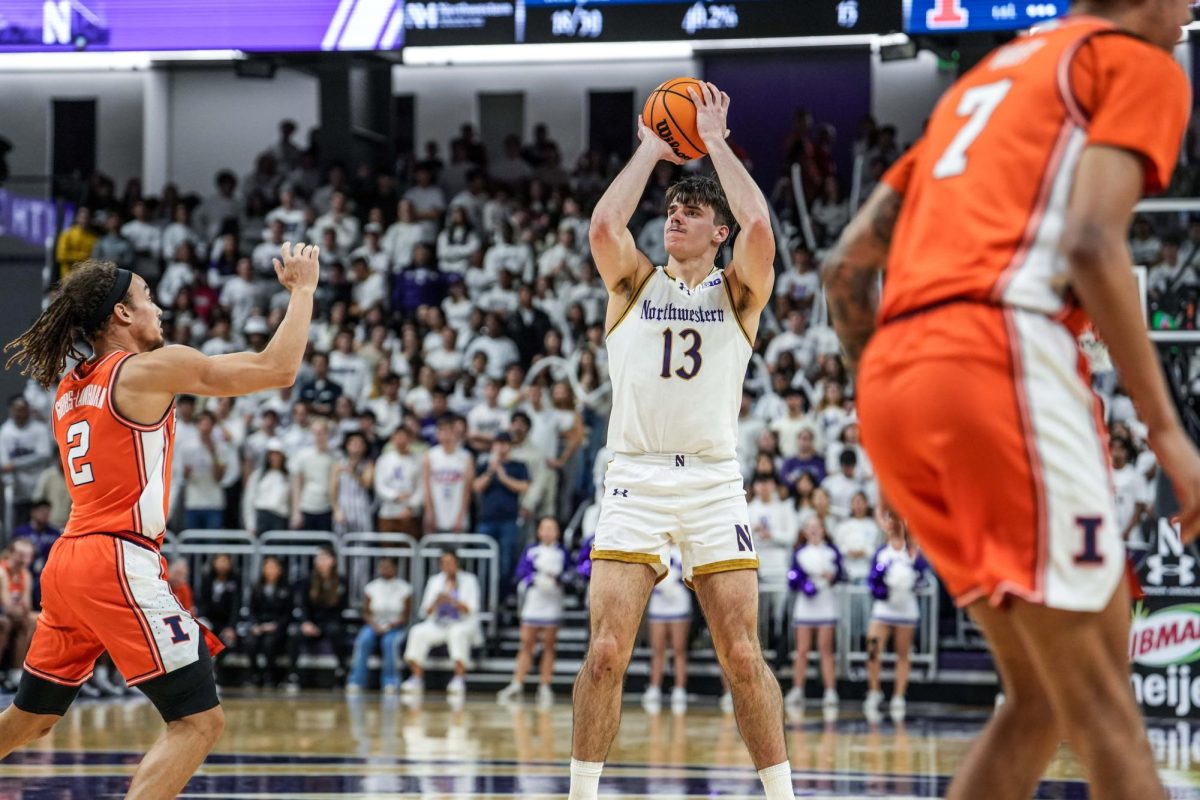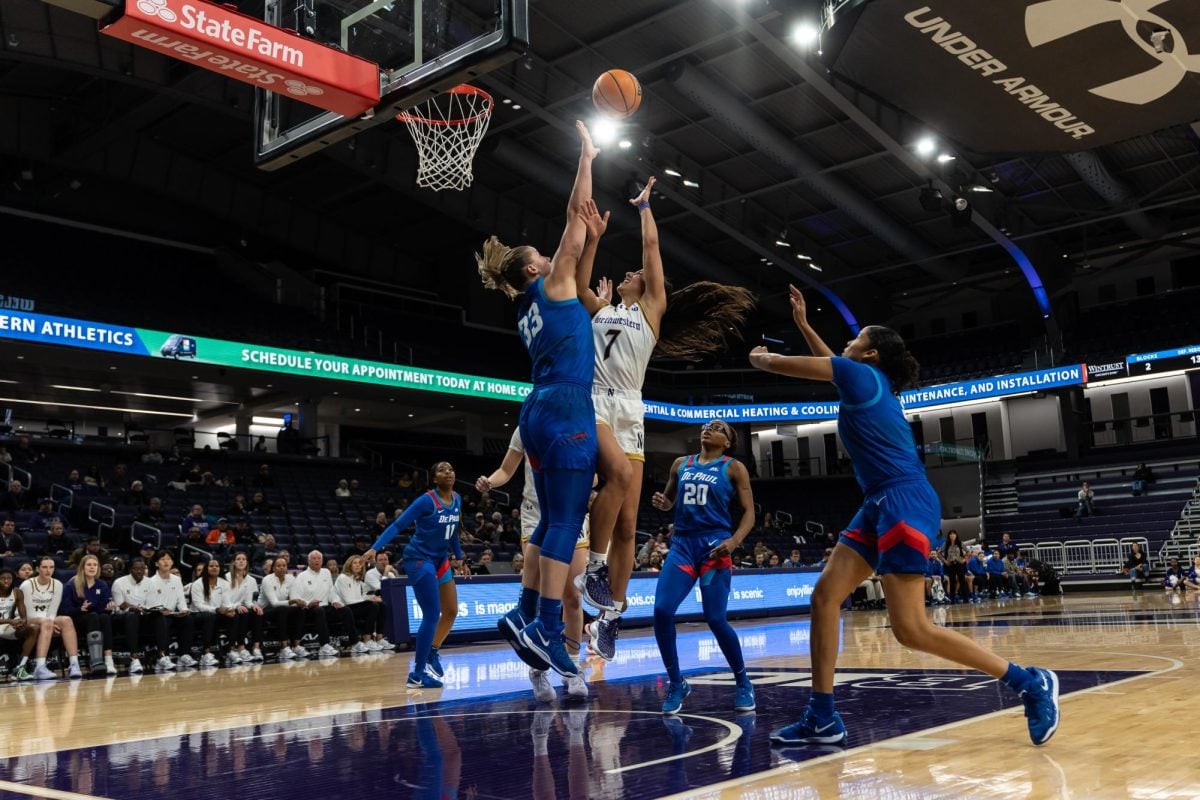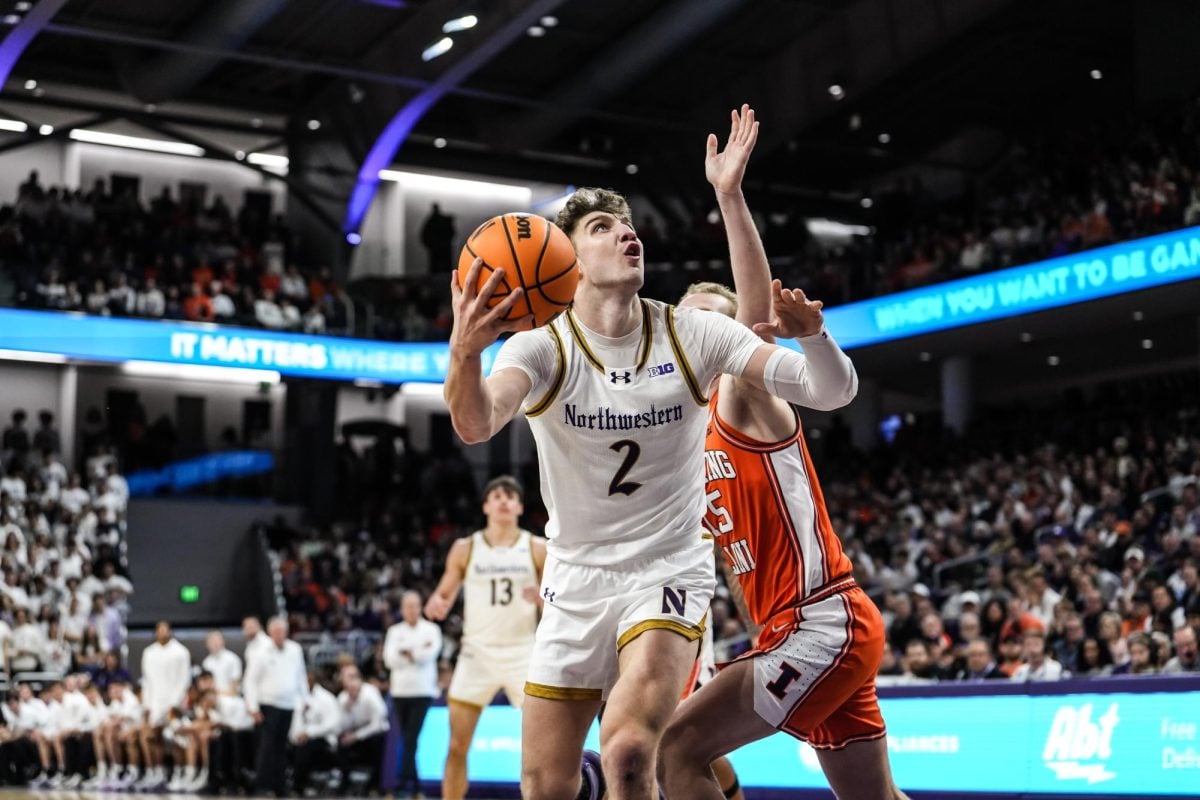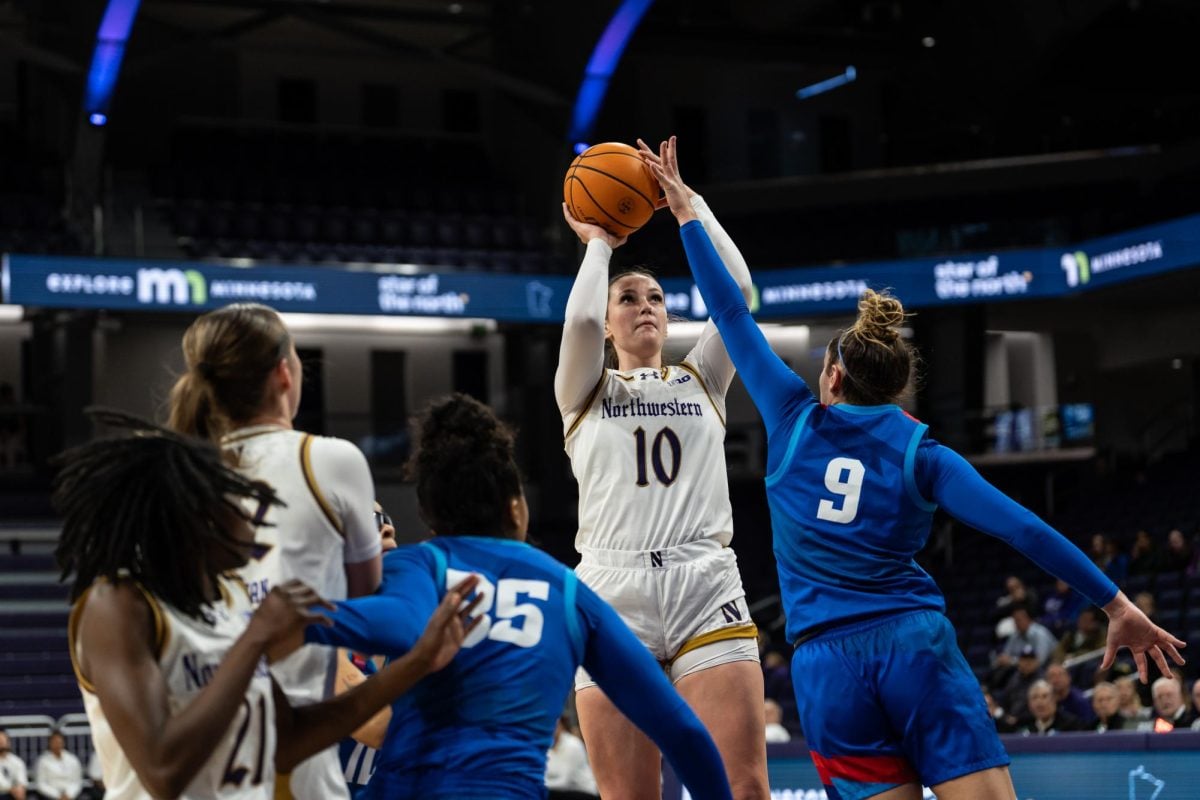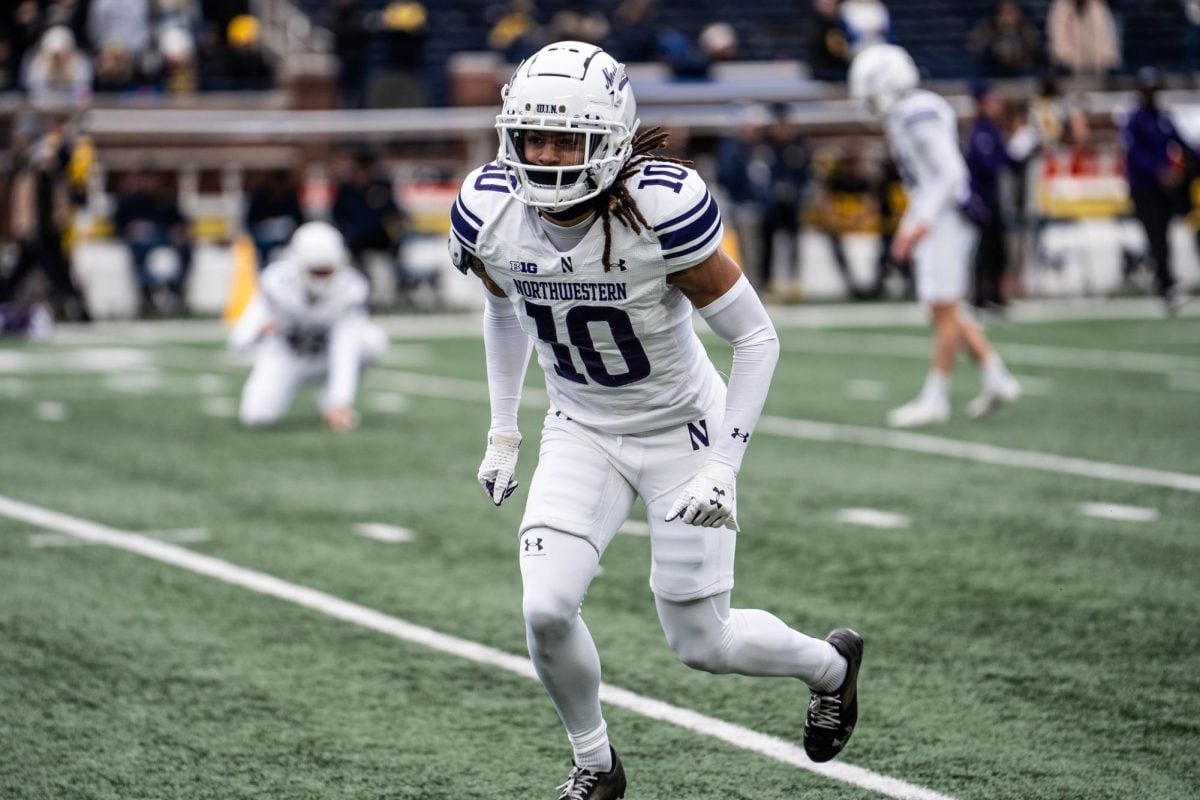Something happened in the Big Ten last year that was incredibly unusual, more unusual even than the conference’s expansion. For the first time in the Big Ten’s storied history, a running back did not lead the conference in rushing.
That honor belonged to Michigan quarterback Denard Robinson, who brings his running skills to Evanston on Saturday. Robinson is well on his way to repeating the feat with 603 yards on the ground so far this season. In a conference known primarily for its power backs, recently a fair share of dual-threat quarterbacks have stolen the show.
Northwestern has two dual-threat signal callers of its own in senior Dan Persa and sophomore Kain Colter, but the Wildcats were not so long ago known for their running backs carrying the ball, not their quarterbacks.
Darnell Autry and Damien Anderson both led the Big Ten in rushing during their time in Evanston, Autry in 1995, and Anderson in 2000. Both also led the Cats to Big Ten titles, and Autry even earned All-American status and was a Heisman finalist during NU’s improbable Rose Bowl run in 1995.
More recently, the Cats have been led by Jason Wright and Tyrell Sutton, who both recorded 1000-yard seasons in the backfield. However, since Sutton’s sophomore season in 2006, no NU running back has eclipsed 1000 yards in a single campaign. It took 21 games since Sutton’s last outing in purple and white for the Cats to have another back rush for 100 yards in a game. That was Mike Trumpy against Indiana last season, but the redshirt sophomore is out for the year after tearing his ACL against Illinois on Saturday.
The proud history of the running back at NU has lured many talents including current sophomore Adonis Smith.
“I have seen a lot of the great, successful running backs come out of here,” Smith said. “I felt like I could be one.”
With Smith, freshman Treyvon Green and senior Jacob Schmidt, NU is not lacking tailbacks. The question is whether there is anyone on the roster capable of surpassing the 1000-yard plateau.
Running Wild
The spread offense is a very dynamic offensive philosophy that allows teams to move quickly and efficiently down the field with a plethora of receiving options as well as run plays. The offensive philosophy has blasted onto the football scene over the past decade with many Football Bowl Subdivision schools running it, including Florida and Auburn, which both rode Heisman-winning quarterbacks to national titles.
NU began running the spread offense under former coach Randy Walker when he took over in 1999. The change in mindset paid off immediately, as quarterback Zak Kustok set the school record with 2,894 yards of total offense in 2000. That number has since been surpassed six times, and the top-eight totals are from the spread-offense era. The rushing record book has also been rewritten under the spread offense, as six of the top-10 single-season rushing records came in the first seven years of the system. However, no one has cracked the top 10 since Sutton in 2005.
A lot of the issues with the running backs start with inconsistency, both in performance and personnel. Since the start of last season, five different players have started at the running back position. Two of those players, Schmidt and Trumpy, suffered season-ending injuries last year. Meanwhile Colter started the TicketCity Bowl at running back.
The other two tailbacks, Arby Fields and Stephen Simmons, are no longer on NU’s roster. Fields, who transferred after last season, was an excellent example of inconsistency in performance. The then-sophomore ran 10 times for seven yards against Vanderbilt, before going off for 96 the next week against Illinois State. He went on to combine for fewer than 96 yards in the last 11 games of the season. The other starter at running back was the then-senior Simmons, who got the nod at Wisconsin, where he led NU with 55 yards on the ground.
A non-issue for the running backs, according to coach Pat Fitzgerald, is NU’s offensive scheme. Fitzgerald said the system itself is not difficult for backs to learn, but it depends on each individual back.
“It’s pretty user-friendly,” Fitzgerald said. “We’ve played a lot of freshmen at that position over time. It comes down to their maturity.”
A freshman has played in each of the last three seasons for the Cats. In 2009, Fields led the team with 302 rushing yards. Last season, Smith finished third on the team and second among running backs with 196 yards. This season, Green has stepped into that role, rushing for 67 yards on 17 carries against Illinois. None of those performances matched Sutton’s freshman year in 2005, when he rushed for 1,474 yards and took home the Big Ten’s Freshman of the Year honors.
Smith said he had trouble learning the system at first, but as the season progressed he became more comfortable in the offense, even declaring it “my offense” after NU’s 35-27 loss to Michigan State last year.
As Smith earned more playing time and continued to grasp the system, his numbers steadily grew. By the time bowl preparations started, Smith said he had a better sense of his role, and that understanding helped him have the best game of his NU career, leading all running backs with 11 carries for 61 yards in the TicketCity Bowl.
Finding a fit
Everyone at NU seems to have a different vision of what the ideal running back would be for the Cats’ spread attack. Is he a good blocker? A power runner? A speedy back with great hands?
The guy delegated to finding the right running back for NU also happens to know a thing or two about who the Cats are looking at. Matt MacPherson is the Cats’ recruiting coordinator, but he also serves as NU’s running backs coach. According to MacPherson, there are a couple of different factors that NU looks for in a running back.
“One, he’s got to be smart,” MacPherson said. “Two, he’s got to be able to make people miss. We’re a spread offense, you’re going to get a lot of one-on-one matchups. Three, he’s got to be able to catch the ball because we’re going to spread him out a lot and throw him the ball.”
For Persa, the running back is an important part of the system. He said the running back plays a key role in opening up new looks for the offense both in the passing and running games. Persa also said that with NU’s propensity to run the ball and throw to backs out of the backfield, the running backs need to be “multiple in their attacks.”
In offensive coordinator Mick McCall’s mind, the best running back for NU’s offense is the one who can be the most flexible. The offensive coordinator liste
d five different facets of the game that the running back must do in the offense, but he also reiterated that they only look at what a guy does best.
“A guy has to be very versatile,” McCall said. “He needs to be able to run the football inside. He needs to be able to pass protect. He has to be able to go out and catch the football. He’s got to be able to run on the perimeter and he’s got to be able to run routes as a receiver.”
Developing a steady supply of these running backs has not been a problem for NU. With injuries plaguing the position group the past couple of seasons, the Cats have relied on a plethora of backs, and for the most part they have responded. McCall praised MacPherson for his work with the running backs and said that the offense has not seemed to be hindered at all with the revolving door in the backfield.
“Coach MacPherson does a great job getting those guys ready to play,” McCall said. “He’s had to get different guys ready all the time and we’ve gone out and been successful.”
Although MacPherson has gotten a ton of tailbacks ready to take the field, NU has yet to find the “bellcow” that the team is looking for.
The next Sutton?
McCall was quick to point out that it would be unfair to compare any of the running backs on the roster to Sutton. However, he did say that the players on the roster can be great fits for the NU offensive scheme. The Cats will still go with a running back by committee approach since none of the backs have truly set themselves apart.
While McCall shied away from any comparisons, many of the other coaches have talked about one player in comparison to Sutton: Green. Fitzgerald said Green has the same footwork, balance and power that Sutton displayed during his time in Evanston.
Green has burst onto the scene for the Cats this season, gaining 141 rushing yards on only 33 carries. MacPherson said he saw a lot of the qualities the Cats are looking for when he scouted Green at Rowlett High School in Mesquite, Texas.
“He made people miss,” MacPherson said. “He caught the ball, he was physical. A lot of the things we’re doing now, he already did.”
If Green is going to become the next Sutton than he will need to continue to build on what he has done so far. Green soaked up the system quickly thanks in most part to the similarity with his high school offense, which was also run mostly out of the shotgun.
“He was really productive with (learning the offense),” Smith said. “He was studying, he was real persistent, and a guy like that you just got to give it to him, you got to commend him for that.”
While there is a bevy of talented tailbacks on the roster, one will need to assert control if NU wants to match the production of Anderson, Autry or Sutton. The issue is that each back possesses different strengths and weaknesses, and each plays a different role in the offense.
“We’ve got good running backs,” McCall said. “They made plays (against Illinois) and made some runs that they couldn’t make the week before. We’ve gotten better and better and we’re going to continue to get better.”
